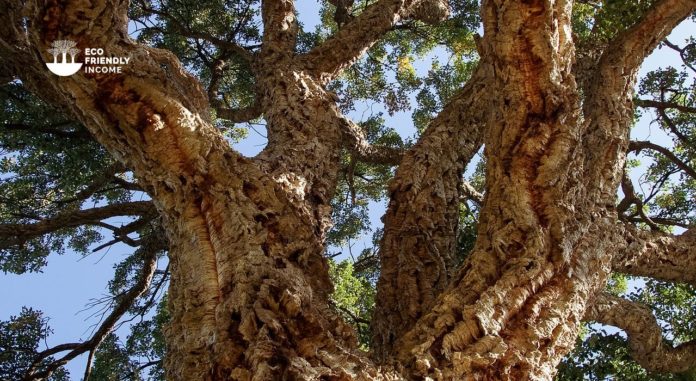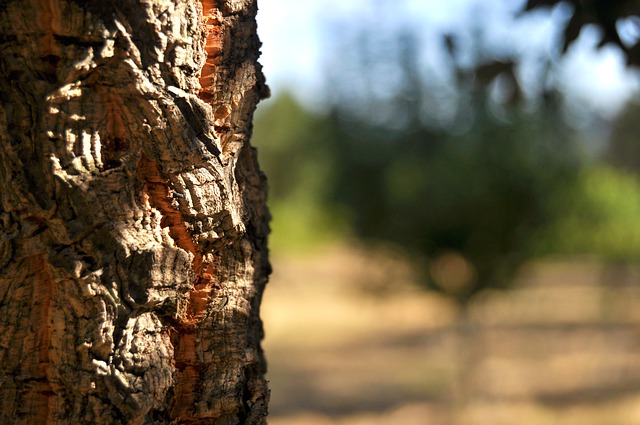This guide is meant to teach you how to propagate Cork Oak (Quercus suber) and hopefully make it easier for you to sell them at your own nursery.

Hardiness Zone: 8-10

Soil Type: Acidic, dry to medium, well-drained sandy soil

Water: Low. Drought Tolerant

Exposure: Full Sun
Cork oak (Quercus suber) is an evergreen deciduous tree native to warm regions of the world. There are a few characteristics that can help you identify cork oak.
How to Identify Cork Oak
Bark
Cork oak bark splits over time and makes thick vertical cracks. The bark is light to dark brown on the outside and burgundy red on the inside.
Cork oak bark is what’s actually harvested to make cork. It doesn’t hurt them since they have the ability to regenerate their outer bark. Generally, cork oak tree bark can be harvested every 9 years, and trees can live up to 300 years.
Leaves
Cork leaves grow up to 7cm long in an oblong shape, with serrated, spiked edges. They grow in an alternate distribution along the branches.
Flowers
Its flowers during spring from April to May. Cork oak flowers are actually catkins, which are yellow in color and hang downwards in bundles.
Habitat
Cork oak naturally grows in dry, poor, rocky soils. There are old cork oak forests in Portugal that are home to rare species such as the Iberian lynx.
Cork Oak Lifespan
Cork oak on average has a lifespan of 200 years, but it can reach up to 300 years and beyond under optimal conditions.
The current oldest cork oak is ‘The Whistler Tree‘, which is 236-year and grows in Águas de Moura, Palmela, Portugal.
Where Cork Oak Trees Grow
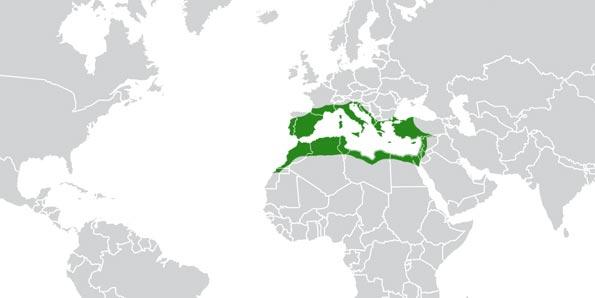
Cork oak trees only grow in areas with warm climates, in hardiness zones, that’s from 8 to 10.
They are native trees from Southern Europe to Northern Africa. It’s often grown commercially in countries like Portugal, Spain, France, Italy, Algeria, Morocco, and Tunisia.
Portugal is the largest worldwide grower of cork oak trees.
Commercial value
Cork, which is the bark harvested from this tree, has a variety of commercial uses.
- Industrial applications: Automobile seals, and gaskets.
- Interior design: Wall decoration, flooring, and sound insulation.
- Sports: Shuttlecocks, baseballs, cricket balls, pool sticks, and bodyboards.
- Leather industry: Handbags, travel cases, wallets, and document holders.
- Beverage industry: Coasters, wine corks.
- Construction: Thermal and sound insulation material, compression and expansion joints in concrete structures.
- Refrigeration: Insulation of water tanks, and cold rooms.
- High technology: Heat shield in missiles, rockets, and bombs.
Wildlife Value
Cork oak is a beneficial tree for a variety of mammals, birds, and insects.
For example, cork oak acorns provide a food source for hares, deer, and boars, amongst other animals.
Some species of insects use cork oak as a host, such as Imperial Moths, Banded Hairstreaks, Edward’s Hairstreaks, Gray Hairstreaks, White-M Hairstreaks, Horace’s Duskywings, and Juvenal’s Duskywings.
Cork oak also provides shelter for birds such as kestrels, little owls, black storks, eagles, Spanish imperial eagles, kites, black vultures, robins, thrushes, chaffinches, and woodpeckers.
Best Way to Propagate Cork Oak
How to Propagate by Seed
One sure way to propagate cork oak is by planting its seeds. Here’s how you can do it:
You can buy seeds online or harvest them yourself.
How to Harvest Cork Oak Seeds
You can get cork oak seeds from their acorns in late autumn, here’s what they look like:
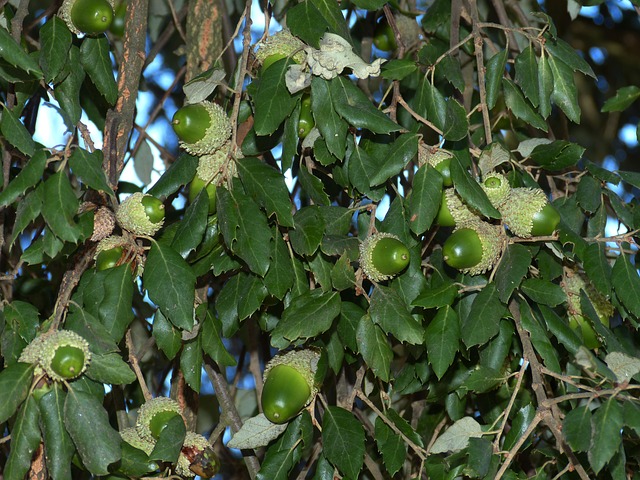
Cork Oak Acorns 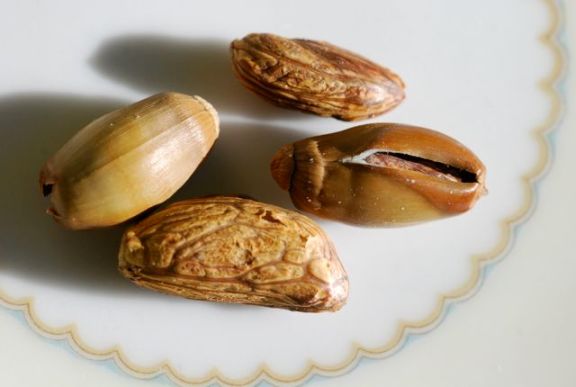
Cork Oak Seeds
Keep in mind that they will usually ripen around the beginning of November.
Inside of each acorn, you can generally get from 1 to 2 seeds. The magic with using acorns to grow oak is that you don’t need to extract the seed from the acorn!
Additionally, acorns are not dormant, so they don’t need a cold pretreatment for them to grow.
Alternatively, you can order quercus suber seeds online here at Sheffields.
Cork Oak Seed Germination
With cork oak, it’s simple enough. Here’s how to germinate their seeds:
- Soak cork oak acorns in water for 2 days, any acorn that still floats after that time are no good, discard them.
- Fill pots almost to the brim with peat-free compost.
- Make sure your pots have drainage holes in the bottom.
- Plant one acorn per pot, at about 2 cm deep.
- Protect the pots from predation! Mice, and squirrels love acorns. Covering with fine wire mesh will work.
- Keep soil moist, cover and avoid placing in direct sunlight.
- They should germinate within one to two weeks.
How to Propagate Cork Oak by Cuttings
The fastest and most effective way to propagate cork oak is by taking semi-hardwood cuttings. That’s new year growth that’s gone partly hard.
Very important: Take your cuttings only from young, healthy plants. Older trees lose their ability to regenerate over the years.
A good strategy is to grow a few cork oak from acorn and select the most promising seedlings to turn into liners. These will be your future sources of cuttings.
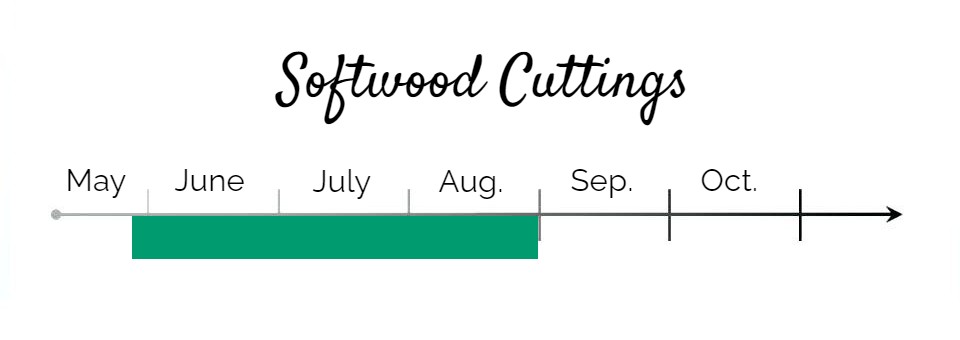
Step 1: Harvest the Cuttings
- First, identify branches that are new growth from the previous year, they should be still on the green side. Note: You can take a whole branch and make multiple cuttings from it.
- Snip the branch just below a node, make sure the width of the cutting is not too thin, 1/4″ to 1/2″ width each is fine.
- Snip off the smaller branches shooting off the main branch, then cut your branch into cuttings 6-8 inches long each. Always snip below the nodes.
Step 2: Root the Cuttings
- Wound the base of the cutting with a vertical line.
- Dip the end of your cuttings in rooting hormone.
- Use a stick to make a hole in your rooting medium.
- Place your cutting into the hole and compact the soil around it.
- Cover the propagation box, and water regularly.
- Cutting should have formed roots by 6 weeks.
Recommended rooting medium: 3:1 Perlite & Peat, with slow releasing fertilizer, ex. Osmocote Exact.
For expert results, keep the temperature high during the rooting period and control humidity.
- Humidity: Use a cover and RH meter for your propagation boxes, mist periodically, for ex. RH at 80% for cork oak.
- Temperature: Use heat mats with a thermometer to control temperature, for ex. 28C for cork oak.
Cork Oak Tree Growth Rate
Cork oak trees are slow growers, at best they will grow a bit more than a foot per year. A 10-15-year-old cork tree can measure only 20 feet.
That’s it, that should have you covered to multiply your plants!
Let’s go propagate cork oaks!
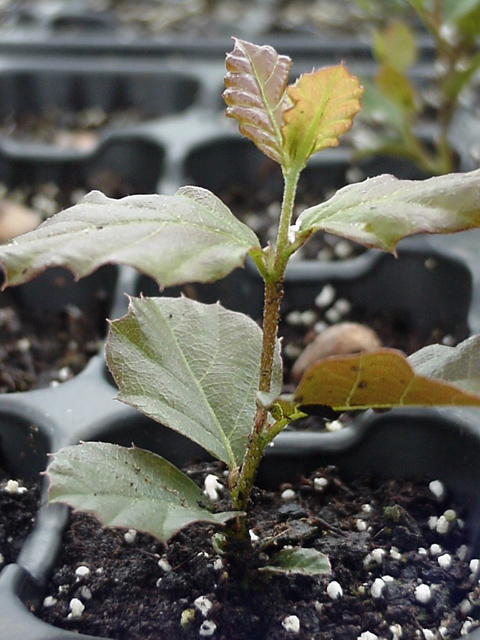
Got any questions or tricks to add? Don’t be shy to comment below and spark up a conversation!

